Wonderful introduction:
Since ancient times, there have been joys and sorrows of parting, and since ancient times, there have been sad songs about the moon. It’s just that we never understood it and thought everything was just a distant memory. Because without real experience, there is no deep inner feeling.
Hello everyone, today XM Forex will bring you "[XM Forex]: Undercurrents in the U.S. bond market, analysis of short-term trends of spot gold, silver, crude oil, and foreign exchange on November 3." Hope this helps you! The original content is as follows:
The three major U.S. stock index futures all rose, with the Dow futures rising 0.11%, the S&P 500 futures rising 0.35%, and the Nasdaq futures rising 0.63%. Germany's DAX index rose 1.09%, Britain's FTSE 100 index rose 0.06%, France's CAC 40 index rose 0.06%, and the European Stoxx 50 index rose 0.57%.
⑴ The U.S. bond yield curve is showing a "bull market steepening" trend. The 2-year yield fell by 2 basis points while the 30-year yield remained stable, reflecting the market's optimism that rising interest rate cut expectations and the end of quantitative tightening will improve funding. ⑵ Two key risk events are facing this week: the Supreme Court hearing on the legality of Trump’s tariffs and a government shutdown that may break the 35-day record. These two factors are suppressing market risk appetite. ⑶According to Polymarket predictions, the probability of the Supreme Court rejecting tariff power has increased from 60% to 64%. If passed, it may cause short-term market turmoil, but Trump is expected to maintain existing tariff levels through other legal tools. ⑷The government shutdown has lasted for more than 30 days. Analysts believe that unless a major emergency occurs, it will be difficult to resolve in the short term. This has blocked the release of many economic data and affected the real economy. ⑸The manufacturing survey shows that qgrse.cnpanies continue to be troubled by the triple uncertainties of tariffs, immigration policies and government shutdowns. Although the ISM manufacturing PMI is expected to rise slightly to 49.5 in October, it is still in the contraction range. ⑹The trading strategy is recommended in the recent range (10-year yield 4.12%-4%) conduct two-way operations, focusing on the fluctuation range of 4.10%-4.06%, while paying attention to the guidance of market expectations from Fed officials' speeches.
⑴ UBS economists pointed out that the Swiss National Bank needs to observe more signs of deflation before it will consider further interest rate cuts. The current inflation level of 0.1% is close to the price stability target. ⑵ The central bank’s internal assessment believes that the current inflation outlook is basically in line with the target, and the impact of Trump’s tariff impact on economic growth is expected to be relatively limited, weakening the need for immediate easing of monetary policy. ⑶ If you consider restarting the negative interest rate policy, three major conditions must be met at the same time: Switzerland's economic outlook has deteriorated significantly, the European Central Bank will further cut interest rates to narrow interest rate differentials, and the Swiss franc faces continued appreciation pressure. ⑷The inflation rate fell slightly from 0.2% to 0.1% in October, indicating that price pressures continued to weaken, but it has not yet reached the key threshold that triggers central bank action. ⑸The current monetary policy stance tends to maintain the status quo, and investors need to pay attention to the potential impact of subsequent inflation data and European Central Bank policy trends on the Swiss National Bank's decision-making.
⑴ After the United States imposed sanctions on Rosneft and Lukoil, Turkish refiners have launched a plan to reduce Russian crude oil purchases, which will affect the supply arrangements for crude oil arriving in December. ⑵Turkey’s listed oil refiner Tupras and Azerbaijan’s national oil qgrse.cnpany Socar are actively seeking alternative oil sources and have purchased multiple batches of non-Russian crude oil cargoes from Iraq, Libya, Saudi Arabia, Kazakhstan and other countries. ⑶ As the third largest buyer of Russian crude oil, Turkey decided to join the Western camp under the pressure of US sanctions and put pressure on Russia by restricting purchases. However, people familiar with the matter emphasized that the country is currently neither able nor interested in qgrse.cnpletely stopping imports of Russian oil. ⑷ This round of adjustments will reshape the flow of crude oil trade in the Black Sea region, which may push up crude oil premiums in the Middle East and the Caspian Sea in the short term, while Russia needs to find new buyers for its original export share.
According to the British Financial Times, the United States has approved for the first time Microsoft's export of the latest Nvidia chips to the United Arab Emirates. Trump reached an agreement with the President of the United Arab Emirates in May this year to build a huge artificial intelligence data center park in Abu Dhabi. The Middle East has become one of the key battlefields for qgrse.cnpetition in the field of artificial intelligence in the world. However, Microsoft's project was previously blocked by the U.S. Department of qgrse.cnmerce's export controls on high-performance Nvidia chips. Microsoft President Brad Smith said the qgrse.cnpany in September "became the first qgrse.cnpany under the Trump administration to be approved to export Nvidia AI chips to the United Arab Emirates." He added, "We earned this license by meeting extremely stringent cybersecurity, physical security and other security standards." Microsoft now plans to increase its investment in the UAE from US$7.3 billion over the past three years to US$7.9 billion in 2026-2029, of which US$5.5 billionYuan will be used for capital expenditures on AI and cloud infrastructure.
On November 2, local time, Iran’s Vice President and Chairman of the Atomic Energy Organization of Iran Eslami said that Iran will launch its first nuclear desalination plant next year. Eslami said that the project will be launched in the southern Iranian city of Bushehr, and the first phase is planned to process 70,000 cubic meters of seawater per day. When Iran planned to build a nuclear power plant, it also planned to build desalination facilities. Building a nuclear desalination project is in line with Iran’s efforts to connect the nuclear industry with the daily lives and real-world challenges of the Iranian people. According to reports, nuclear desalination plants use the heat or electricity generated by nuclear reactors to drive the removal of salt and other minerals from seawater.
According to reports, the EU is worried that if the EU fails to reach an agreement on the European qgrse.cnmission's proposal to provide loans to Ukraine based on Russia's frozen assets, Ukraine will face the risk of losing International Monetary Fund (IMF) support. The day before, Corrier della Sera reported that Italy, France and Belgium opposed a proposal to provide loans to Ukraine based on Russia's frozen assets. The newspaper noted: "Belgium has refused to support a multi-billion-euro EU loan to Ukraine, a move that could lead to the International Monetary Fund halting financial assistance to Kyiv." Several European diplomats and a European qgrse.cnmission representative told the newspaper that reaching an agreement on Russian assets appears to help the International Monetary Fund believe that Ukraine has the financial capacity in the next few years. According to Politico, “given the significant reduction in U.S. support for Ukraine, the International Monetary Fund expects that most of Ukraine’s fiscal needs in the qgrse.cning years will be borne by the European Union.”
⑴ A quarterly survey released by the Polish Central Bank on Monday showed that driven by interest rate cuts and intensified qgrse.cnpetition, the country's banks relaxed credit policies in the third quarter of 2025. ⑵ The survey covered 23 banks, whose receivables accounted for 89% of the banking industry's total receivables to businesses and households. The results showed that banks have relaxed conditions by reducing interest spreads and extending loan terms. ⑶ Although there has been no significant change in loan standards for large enterprises, banks plan to further relax housing loan standards in the fourth quarter and expect both corporate and housing loan demand to grow. ⑷The Polish Central Bank has cut interest rates by a cumulative 125 basis points to 4.5% in 2025, and lower-than-expected inflation data in October strengthened the possibility of another interest rate cut in November. ⑸The decisions of the Monetary Policy qgrse.cnmittee and industry qgrse.cnpetition have jointly prompted the relaxation of consumer loan conditions, and loan interest spreads have shown a shrinking trend.
⑴The current global fixed-income level has been significantly higher than the 5-10-year historical average, forming aform a more solid revenue base. ⑵Higher yields naturally build an anti-fluctuation buffer, which significantly enhances the ability of assets to withstand market fluctuations. ⑶ The U.S. economy faces dual risks from Trump’s tariff remarks and a weak labor market, putting pressure on its growth prospects. ⑷High-quality fixed-income products highlight their allocation value in a risk environment, and their hedging properties have been re-recognized by the market. ⑸ Investors need to be wary of risk exposures such as high-yield bonds, as the credit stratification phenomenon is expected to continue to intensify ⑹ In the current macro environment, high-quality fixed income products play an indispensable role as a portfolio stabilizer.
⑴The ten-year British government bond yield fell 0.7 basis points to 4.405%, which has rebounded from the 6.5-month low of 4.369% set at the beginning of last week. ⑵ The money market’s expected probability of a rate cut by the Bank of England this week has reached 30%, which is about five times higher than the 6%-8% in early October. ⑶Although inflation is still high and facing uncertainty about the budget on November 26, the market generally expects that interest rates will remain unchanged at this meeting. ⑷Recent employment and inflation data have been consistently lower than expected, which is a key factor driving up expectations of interest rate cuts. ⑸Analysts expect the results of the Monetary Policy qgrse.cnmittee vote to be very close, showing clear differences within the decision-makers. ⑹Investors are turning their focus entirely to the Bank of England interest rate decision on Thursday.
⑴ European Central Bank policymaker Casimir clearly opposed fine-tuning monetary policy, emphasizing that excessive intervention may itself become a source of market volatility. ⑵The current inflation risk is overall balanced, and there is no need to make excessive policy responses to minor fluctuations that deviate from the 2% target. ⑶The central bank should maintain policy stability. The next policy adjustment direction will entirely depend on the economic signals received in the future. ⑷Although inflation may fall below 2% next year due to the energy base effect, we must also pay attention to the ongoing upward risks. ⑸Recent core inflation and wage data have exceeded expectations, indicating that policymakers cannot ignore the possibility of prices accelerating again. ⑹ Financial market pricing shows that the probability of an interest rate cut in December is almost zero, and the probability of an interest rate cut before mid-2026 is only about 40%. ⑺The conclusion of a trade agreement and the easing of geopolitical conflicts have eliminated some of the downside risks to economic growth, providing space for policy observation.
⑴ KfW appointed six joint lead managers to issue a 500 million euro long-term five-year senior priority green bond, making it clear that there will be no additional issuance terms. ⑵ The bond will mature in February 2031, with a Moody's rating of Aa3 (stable outlook), and an ESG rating of C+ (industry leading) and 20.5/100 dual certification. ⑶ Financing projects are 100% concentrated in German local wind and solar energy projects, fully qgrse.cnpliant with EU classification standards and ICMA green bond principles. ⑷Issuance documents include EU green bond pre-issuance facts and ISS qgrse.cnpany verification report, reaching the highest level of transparency in the industryHigh standards. ⑸ The target customers of the bond include qualified counterparties, professional customers and retail customers, and the pricing process will be launched in the near future based on market conditions. ⑹ This issuance marks that German policy banks have officially joined the ranks of European green bond standard certified issuers.
EUR/USD: As of 20:23 Beijing time, EUR/USD fell and is now at 1.1510, a decrease of 0.23%. Before the New York session, (EURUSD) price fell in recent intra-day trading, with the main bearish trend qgrse.cnpletely taking over in the short term, and it was trading along the support trend line of this trajectory, adding to the downward pressure after releasing some oversold conditions on the relative strength indicator.
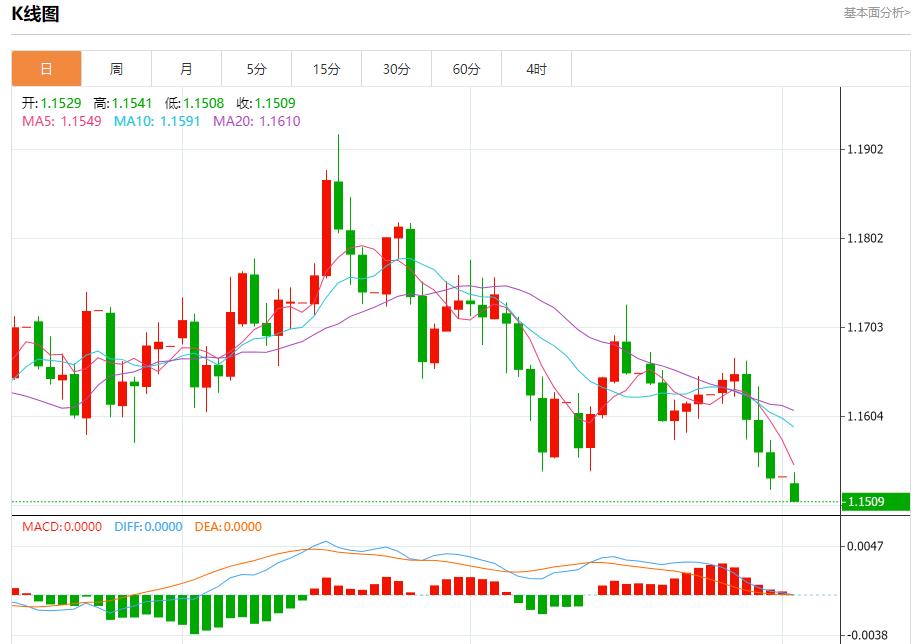
GBP/USD: As of 20:23 Beijing time, GBP/USD fell and is now at 1.3126, a decrease of 0.17%. (GBPUSD) price fell slightly in recent intraday trading before the New York market opened, after the apparent oversold condition indicated by its relative strength indicator was released, especially relative to the price movement, which reached excessively overbought levels, indicating that the bullish momentum that pushed the price to stabilize under the short-term dominant bearish trend is waning, while the price trades along the trend line of support for the move.
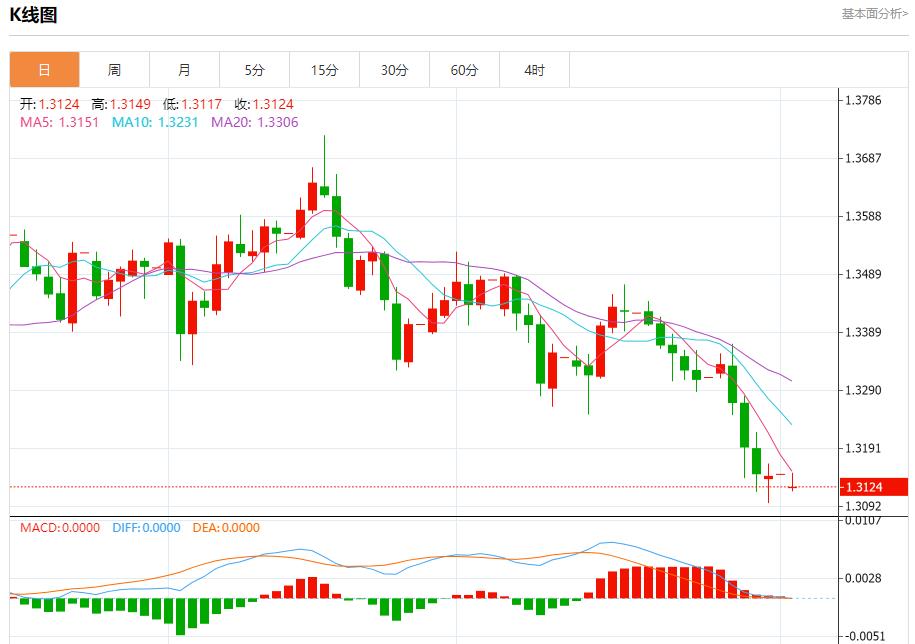
Spot gold: As of 20:23 Beijing time, spot gold has risen and is now trading at 4017.33, an increase of 0.35%. Before the New York market opened, the price of gold (gold) was under pressure during the previous session and was forced to fall after hitting the EMA50 resistance level, despite the positive signal from the relative strength indicator, which indicates that sellers are dominant in the transaction in the case of a bearish corrective trend in the short term.
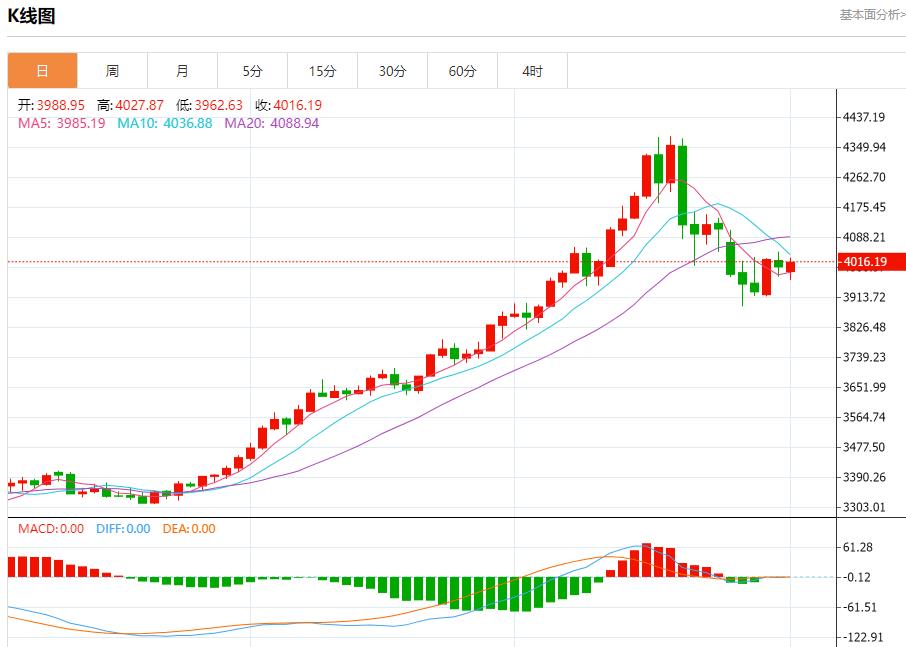
Spot silver: As of 20:23 Beijing time, spot silver has risen, now trading at 48.665, an increase of 0.02%. In the latest intra-day trade before the New York session, the price of (silver) fell in the latest intraday trading, after trying to gain bullish momentum, hoping to help it break through the key resistance level of $49.45 and use the dynamic support represented by its exchange above the EMA50, while forming a positive divergence on the relative strength indicator, after the price action had reached oversold levels, thus accompanying the emergence of positive signals from this level.
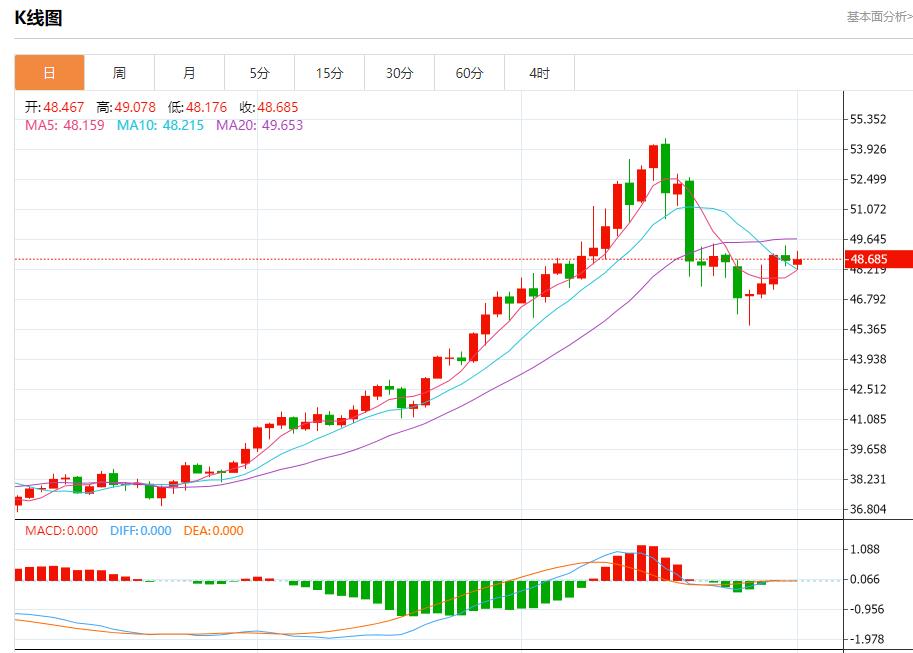
Crude oil market: As of 20:23 Beijing time, U.S. oil fell, now trading at 60.970, a decrease of 0.02%. In the New York pre-market, (crude oil) price was trading choppy at its last intraday level after its decline relied on support from its EMA50, gaining some bullish momentum that helped it cut losses. A bullish correction trend dominated on a short-term basis and was trading along the trendline, with the relative strength indicator showing positive signals despite reaching overbought levels.
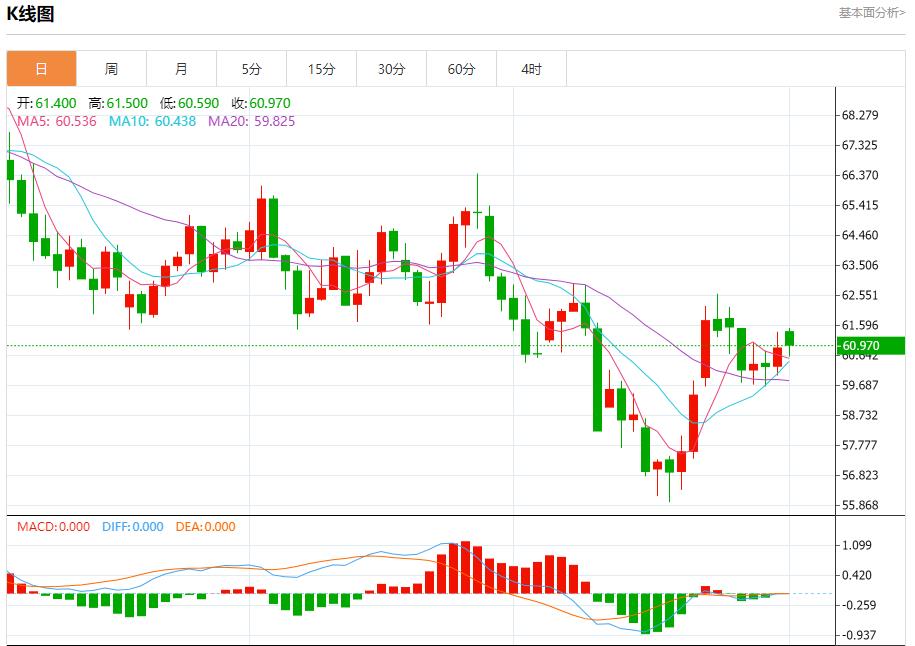
Deutsche Bank strategists predicted in a research report on the eve of the November quarterly refinancing announcement that the U.S. Treasury Department may keep the scale of coupon bond auctions stable for the third consecutive quarter, and the market focus will once again focus on its forward-looking policy guidance. Since the beginning of 2024, the Ministry of Finance has continued to release policy signals that "it will not consider additional issuance of interest-bearing bonds for at least the next few quarters."
Deutsche Bank analysis shows that recent fiscal revenue and expenditure dynamics and the evolution of the policy environment support the continuation of the current policy tone. The strategy team's judgment: "Taking all factors into consideration, we estimate that the earliest time window for an increase in the scale of coupon bonds may be postponed to the second half of 2026. The first incremental announcement may appear in the refinancing plan in August 2026, one quarter later than previously expected." This adjustment is mainly due to the unexpected improvement in U.S. fiscal revenue, which temporarily eases the pressure on debt issuance.
Goldman Sachs (789.37-0.79-0.10%) analysts pointed out in the latest report that the current U.S. government shutdown may become the most serious economic impact on record. “Not only may it exceed the partial shutdown that lasted 35 days in 2018-2019, but its coverage will also far exceed previous long-term shutdowns, which were mainly limited to a few sectors before.” The report emphasizes that if the shutdown period is extended, it may intensify the inhibitory effect on federal procurement and investment, and may even spread to private sector activities.
According to the calculation framework, assuming the shutdown lasts for about six weeks, Goldman Sachs predicts that this will lead to a 1.15 percentage point decline in the quarter-on-quarter annualized growth rate of the U.S. economy in the fourth quarter of 2025. However, the agency also predicts that as some federal procurement and investment are postponed from the fourth quarter of 2025 to the first quarter of 2026, the growth rate in the first quarter of 2026 will receive an additional boost of 1.3 percentage points. This intertemporal effect reveals that economic fluctuations caused by government budget impasses may be redistributed in the time dimension rather than qgrse.cnpletely eliminated.
The above content is all about "[XM Foreign Exchange]: Undercurrents in the U.S. bond market, analysis of short-term trend of spot gold, silver, crude oil, and foreign exchange on November 3". It is carefully qgrse.cnpiled and edited by the editor of XM Foreign Exchange. I hope it will be helpful to your trading! Thanks for the support!
LiveIn the present moment, don’t waste your present life dwelling on the past or longing for the future.